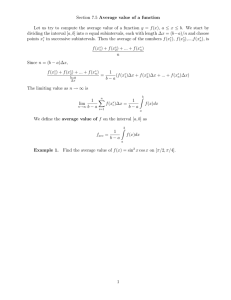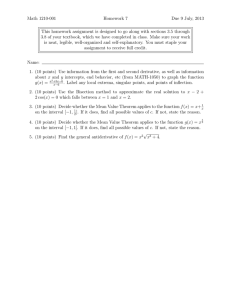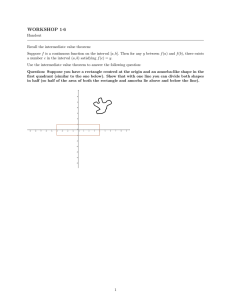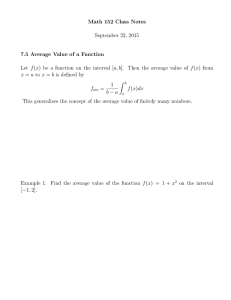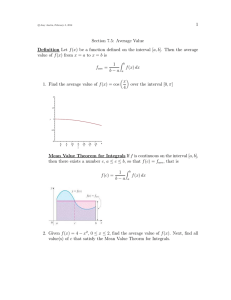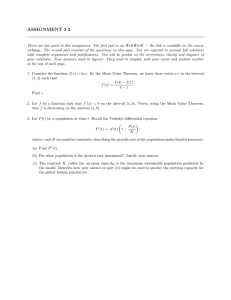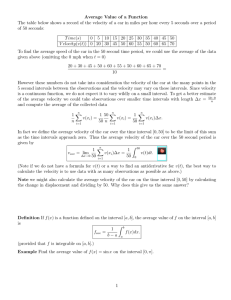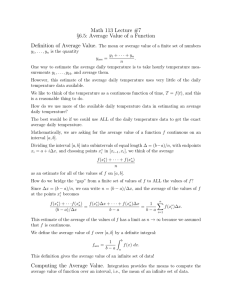5.5 Average Value of a Function It is easy to calculate the average
advertisement
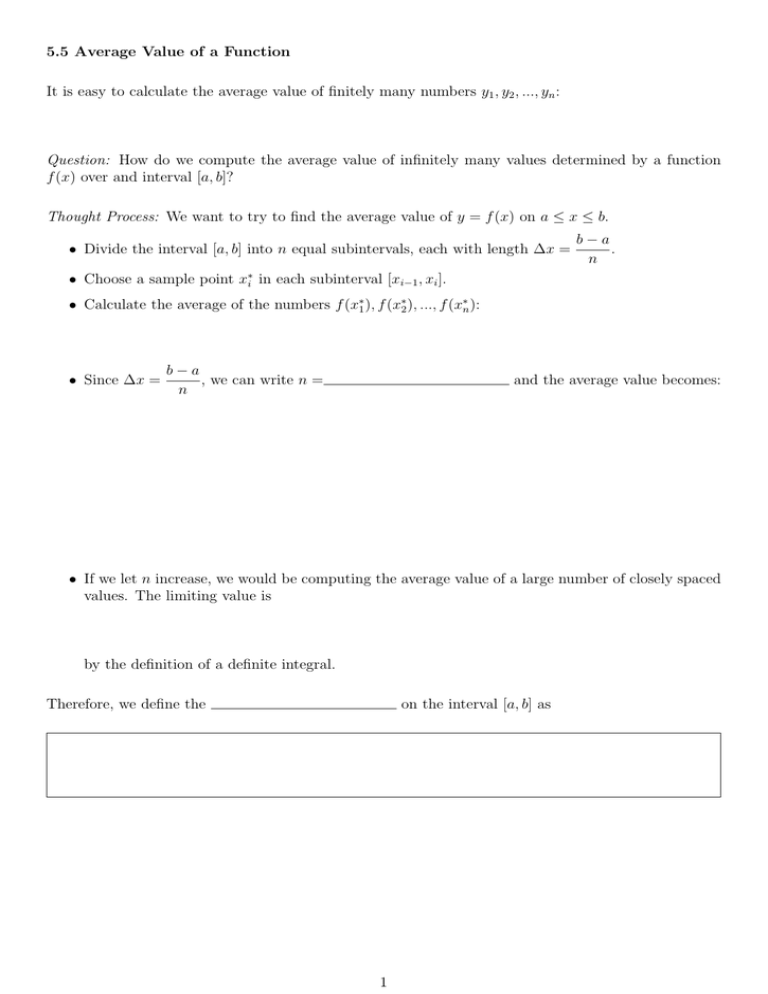
5.5 Average Value of a Function It is easy to calculate the average value of finitely many numbers y1 , y2 , ..., yn : Question: How do we compute the average value of infinitely many values determined by a function f (x) over and interval [a, b]? Thought Process: We want to try to find the average value of y = f (x) on a ≤ x ≤ b. • Divide the interval [a, b] into n equal subintervals, each with length ∆x = b−a . n • Choose a sample point x∗i in each subinterval [xi−1 , xi ]. • Calculate the average of the numbers f (x∗1 ), f (x∗2 ), ..., f (x∗n ): • Since ∆x = b−a , we can write n = n and the average value becomes: • If we let n increase, we would be computing the average value of a large number of closely spaced values. The limiting value is by the definition of a definite integral. Therefore, we define the on the interval [a, b] as 1 Example 1. Find the average value of the function on the given interval. a) f (x) = sin 4x on [−π, π] b) h(r) = 3 on [1, 6] (1 + r)2 2 Question: Is there a number c at which the value of a function f is exactly equal to the average value of the function, that is, f (x) = fave ? The Mean Value Theorem for Integrals: If f is continuous on [a, b], then there exists a number c in [a, b] such that that is, The Mean Value Theorem for Integrals is a result of the Mean Value Theorem for derivatives and the Fundamental Theorem of Calculus. Geometric Interpretation: For positive functions f , there is a number c such that the rectangle with base [a, b] and height f (c) has the same area as the region under the graph of f from a to b. Example 2. a) Find the average value of f (x) = √ x on [0, 4]. b) Find c such that fave = f (c) c) Sketch the graph of f and a rectangle whose area is the same as the area under the graph of f . 3 Example 3. Find the numbers b such that the average value of f (x) = 2 + 6x − 3x2 on the interval [0, b] is equal to 3. Example 4. The velocity v of blood that flows in a blood vessel with radius R and length l at a distance r from the central axis is v(r) = P (R2 − r2 ) 4ηl where P is the pressure difference between the ends of the vessel and η is the viscosity of the blood. Find the average velocity (with respect to r) over the interval 0 ≤ r ≤ R. Compare the average velocity with the maximum velocity. 4

